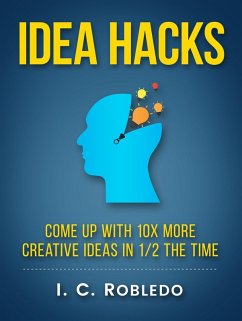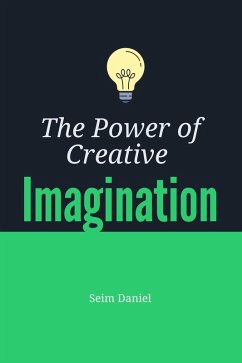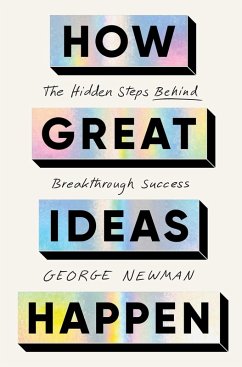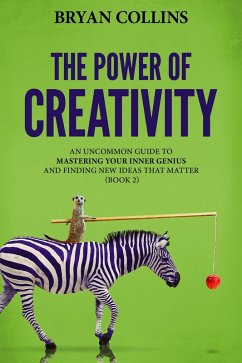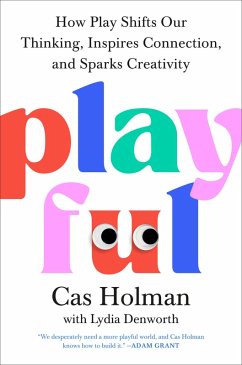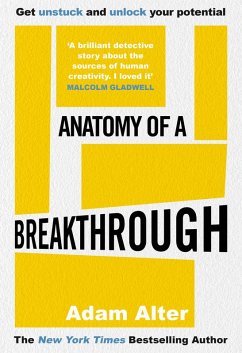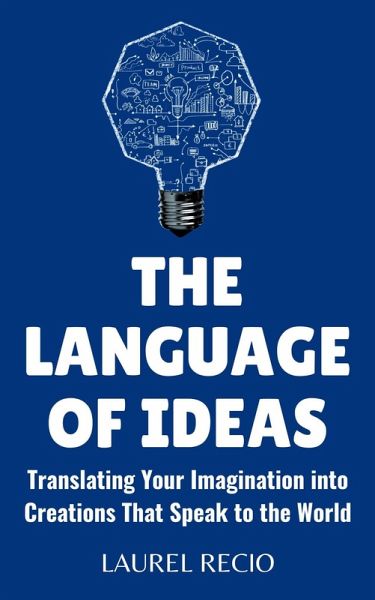
The Language of Ideas : Translating Your Imagination into Creations that Speak to the World (eBook, ePUB)

PAYBACK Punkte
0 °P sammeln!
Every great creation begins as an idea, but not every idea finds its way into the world with clarity and impact. "The Language of Ideas" reveals how imagination can be shaped into expressions that connect, inspire, and resonate beyond personal thought. It is a guide for turning inner creativity into external form-whether through writing, design, innovation, or conversation-that others can understand and embrace.The book examines the journey from conception to execution, showing how raw inspiration often stalls when there is no framework for expression. Readers are guided through the principles...
Every great creation begins as an idea, but not every idea finds its way into the world with clarity and impact. "The Language of Ideas" reveals how imagination can be shaped into expressions that connect, inspire, and resonate beyond personal thought. It is a guide for turning inner creativity into external form-whether through writing, design, innovation, or conversation-that others can understand and embrace.
The book examines the journey from conception to execution, showing how raw inspiration often stalls when there is no framework for expression. Readers are guided through the principles of translating abstract thoughts into tangible creations without losing their originality. This process highlights how to balance vision with structure, ensuring that imagination is not diluted while still being comprehensible to others.
Attention is given to the practical tools of communication. Readers learn how word choice, tone, and structure transform ideas from scattered fragments into cohesive messages. By understanding how audiences interpret and respond, the book demonstrates how to shape content that speaks directly to people's needs, values, and emotions. Examples from various fields illustrate how successful creators refine their language to bridge the gap between inspiration and reception.
The book also addresses the barriers that often silence creativity: fear of judgment, self-doubt, and the temptation to overcomplicate. By stripping away these obstacles, readers are encouraged to see ideas as living forms that gain strength when shared. The text explains how simplicity often carries more power than complexity, and how clarity can elevate a concept beyond what was originally imagined.
Practical exercises and frameworks show how to capture fleeting thoughts before they fade, organize them into workable outlines, and refine them into finished creations. From brainstorming techniques to methods of editing and reshaping, readers gain tools to move fluidly from imagination to execution. These approaches emphasize action over perfection, ensuring momentum is never lost in the process of creation.
"The Language of Ideas" highlights how collaboration and feedback expand creative expression. Readers are shown how to present concepts in ways that invite dialogue rather than defensiveness, fostering environments where ideas grow stronger through exchange. This emphasis on adaptability ensures that creations remain dynamic and responsive rather than rigid or isolated.
The connection between authenticity and influence is explored in depth. The book stresses that the most powerful ideas are those rooted in personal truth yet framed in ways that resonate universally. By examining how great communicators and innovators balance individuality with relevance, readers discover how to craft messages that both reflect their unique vision and appeal to broader audiences.
Illustrated with examples across art, business, science, and personal storytelling, the book demonstrates that the principles of translating ideas apply universally. Readers are shown how imagination, when given form and structure, becomes a language of its own-capable of shaping thought, sparking change, and leaving a lasting imprint.
Written with precision and purpose, "The Language of Ideas" serves as both inspiration and strategy, guiding readers to express their imagination in ways that carry weight, meaning, and reach.
The book examines the journey from conception to execution, showing how raw inspiration often stalls when there is no framework for expression. Readers are guided through the principles of translating abstract thoughts into tangible creations without losing their originality. This process highlights how to balance vision with structure, ensuring that imagination is not diluted while still being comprehensible to others.
Attention is given to the practical tools of communication. Readers learn how word choice, tone, and structure transform ideas from scattered fragments into cohesive messages. By understanding how audiences interpret and respond, the book demonstrates how to shape content that speaks directly to people's needs, values, and emotions. Examples from various fields illustrate how successful creators refine their language to bridge the gap between inspiration and reception.
The book also addresses the barriers that often silence creativity: fear of judgment, self-doubt, and the temptation to overcomplicate. By stripping away these obstacles, readers are encouraged to see ideas as living forms that gain strength when shared. The text explains how simplicity often carries more power than complexity, and how clarity can elevate a concept beyond what was originally imagined.
Practical exercises and frameworks show how to capture fleeting thoughts before they fade, organize them into workable outlines, and refine them into finished creations. From brainstorming techniques to methods of editing and reshaping, readers gain tools to move fluidly from imagination to execution. These approaches emphasize action over perfection, ensuring momentum is never lost in the process of creation.
"The Language of Ideas" highlights how collaboration and feedback expand creative expression. Readers are shown how to present concepts in ways that invite dialogue rather than defensiveness, fostering environments where ideas grow stronger through exchange. This emphasis on adaptability ensures that creations remain dynamic and responsive rather than rigid or isolated.
The connection between authenticity and influence is explored in depth. The book stresses that the most powerful ideas are those rooted in personal truth yet framed in ways that resonate universally. By examining how great communicators and innovators balance individuality with relevance, readers discover how to craft messages that both reflect their unique vision and appeal to broader audiences.
Illustrated with examples across art, business, science, and personal storytelling, the book demonstrates that the principles of translating ideas apply universally. Readers are shown how imagination, when given form and structure, becomes a language of its own-capable of shaping thought, sparking change, and leaving a lasting imprint.
Written with precision and purpose, "The Language of Ideas" serves as both inspiration and strategy, guiding readers to express their imagination in ways that carry weight, meaning, and reach.
Dieser Download kann aus rechtlichen Gründen nur mit Rechnungsadresse in A, B, CY, CZ, D, DK, EW, E, FIN, F, GR, H, IRL, I, LT, L, LR, M, NL, PL, P, R, S, SLO, SK ausgeliefert werden.





